Presented By: Partner Insights
How do BIDs Strengthen City Neighborhoods? Programming, Beautification, and Progress.
By Partner Insights July 15, 2024 8:00 am
reprints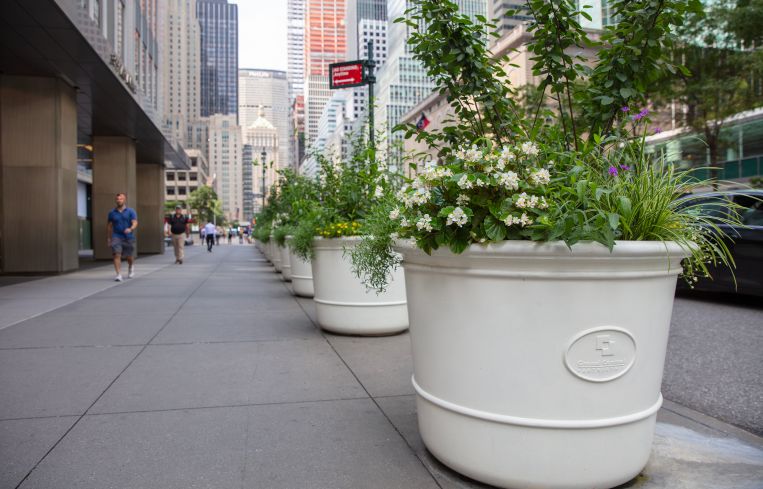
One of the more vital and viral sensations on New York City streets this year has been The Portal, an incredible sculpture/technological achievement that lets pedestrians interact in real time with passersby in Dublin, Ireland via a large video wall connected to a portal located on that city’s O’Connell Street.
Unveiled this past May next to the Flatiron Building, The Portal will remain in place throughout the summer. For the incredible experience of being able to communicate so directly with our friends across the world, New Yorkers have the Flatiron Nomad Partnership to thank.
“It’s been a long time coming,” said James Mettham, President of the Flatiron Nomad Partnership, which works to support an area roughly bordered by 20th Street, Sixth Avenue, 31st Street, and Park Avenue South or Lexington Avenue. “We worked closely with The Simons Foundation at 21st Street and Fifth Avenue, which does remarkable research in math and science and were gracious funders of this. The Portal is a wonderful way to showcase our neighborhood and our city, and it’s a piece of urban technology that doesn’t exist anywhere else.”

The city’s Business Improvement Districts (BIDs) and neighborhood associations, like the Flatiron Nomad Partnership, are multifaceted organizations that handle everything from providing support for area businesses to beautifying their neighborhoods.
This year, continuing to create and beautify more pedestrian spaces has been a primary focus for many.
“We have continued to build out what we think is one of the most exceptional corridors in the city, which is Broadway from 17th Street and Union Square up to 31st Street,” said Mettham. “If you walk that stretch, you’ll see that it’s an amazing place to take a stroll, have a bite to eat, or experience one-of-a-kind public art.”

Mettham and the Partnership plan to beautify sections of Park, Madison, Fifth, and Sixth Avenues in a similar fashion in the years ahead, including potential improvements such as plazas, bump-outs, and other streetscape improvements.
For the Grand Central Partnership, which covers the area in Midtown bordered by 35th Street, 54th Street, Second Avenue and Fifth Avenue, president/CEO Fred Cerullo said that 2024 has seen the continuation of initiatives designed to capitalize on a massive increase in pedestrian traffic in the area, particularly given the addition of an LIRR station to the Grand Central Terminal in early 2023.
“The Long Island Rail Road opening a year ago in February has led to a 133% increase in people with Long Island zip codes in our district, and I’m not talking about the activity in the terminal. I’m talking about in the neighborhood,” said Cerullo. “The Long Island Rail Road is also driving weekend numbers. We have areas in the district that surpass 2019 numbers on weekends. So there’s a changing experience in the neighborhood, and that programming becomes really important.”

On that front, Cerullo is excited about a new public space activation opening in the fall at Pershing Square East, and the reimagining of the district’s horticulture program, which contributes to both improved sustainability and enhanced beautification of the area.
“We have over 500 planters and 300 tree pits, and probably the same amount of hanging baskets,” said Cerullo. “The planters only looked good during the late spring and summer and into the fall. The winter was barren. We wanted a horticultural program that created greenery 12 months out of the year.”
The Partnership worked with landscape architect Nina Kramer to add new plant life to the area with names like Yellow Lantana, Acorus Ogon, and Carex Silver Scepter. The result has been lush greenery in the area throughout all four seasons.
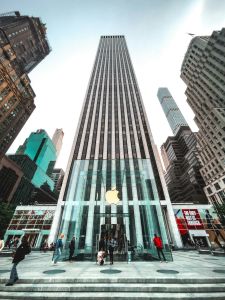
Public space beautification has also been a priority for The Downtown Alliance, which serves the area bordered by City Hall, the Battery, the East River and West Street.
“We’ve always maintained city parks like Bowling Green and Elizabeth H. Berger Plaza,” said Alliance president Jessica Lappin. “But we also do a lot of seasonal plantings on all of the light poles and baskets along Broadway and Nassau Streets. We maintain over a hundred of the city’s DOT planters. We have an in-house horticulturalist who oversees how we take care of these parks, baskets, and plazas, and it adds a lot to the vibrancy of the district.”
Over at the Fifth Avenue Association, which serves the section of Fifth Avenue from roughly the mid-40s to the mid-60s and is the city’s oldest such organization, one major priority for 2024 has been continuing progress on the avenue’s redesign, an initiative the association conceived and began developing during COVID.
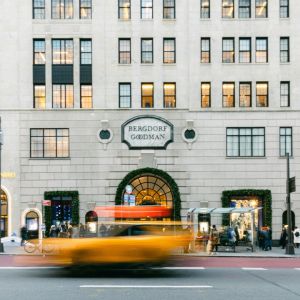
“Back in 1907, the Fifth Avenue Association decided to widen the roadbed because these newfangled cars were coming into existence, and they wanted to create the first major corridor in America that could handle a roadway booming with cars,” said Madelyn Wils, president of the Fifth Avenue Association. “Fast-forward 120 years and the thinking has changed; we have far more people coming to experience and shop Fifth Avenue than can fit on the sidewalks. Cars are no longer the priority, and we need to figure out how to give space back to pedestrians.”
Wils said that a space of around 20 blocks along Fifth Avenue, from Bryant Park to Central Park South, will see extended sidewalks and expanded greenery, making the avenue more conducive to walking and shopping.
The project, a collaborative effort between numerous public and private organizations, including NYCEDC, the Department of Transportation and the Grand Central Partnership, is currently in the schematic design phase.
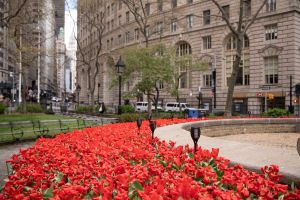
While the project’s timeline is currently uncertain, the end result will be a much more welcoming and pedestrian-friendly Fifth Avenue.
“If you look down Fifth Avenue now, you won’t see many plants – you’ll hardly see a tree. There isn’t enough shade or places for people to sit,” said Wils. “We want Fifth Avenue to be more like the Champs-Élysées in Paris, or Bond Street in London – pedestrian-focused boulevards with inviting streets for people to walk along and spend long periods of time. Because the longer people linger on the avenue, the more time they’re spending in the stores, museums, hotels, and restaurants that contribute to our city and make Fifth a world-class retail destination.”
On a grander scale, Fifth Avenue will be celebrating its 200th anniversary soon, and the Fifth Avenue Association is currently planning a year-long celebration of the avenue set to begin late this year and continue on through 2025.
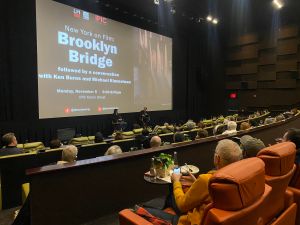
“We are the oldest neighborhood association in New York City, started by the Vanderbilt, Guggenheim, Carnegie and Astor families over a century ago,” said Wils. “It’s very interesting how all the goals of the Fifth Avenue Association back then are still relevant today: to keep Fifth Avenue safe and clean and make it a place people want to visit. All those years ago, New York’s major families wanted to transform Fifth Avenue into an oasis for art, architecture, and commerce, and that carries on today. Just the section of Fifth Avenue within our BID has 19 landmarks, and some of the city’s most beautiful buildings are along Fifth. It really is the pulse of New York City.”
In addition to keeping their sections of the city safe, clean, and welcoming, many of the city’s BIDs have also been busy on the culinary and cultural programming fronts, two more significant drivers for the city’s neighborhoods.
The Flatiron NoMad Partnership establishes community programming such as Winter Glow, a month-long series in December that integrates the area’s retail shops with events such as the unveiling of public art installations, live theater, game nights, a silent disco night and more.
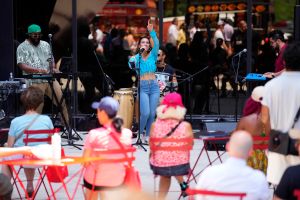
Grand Central Partnership’s programming has included last year’s return of “Grand Gourmet – The Flavor of Midtown.” Held at Cipriani 42nd Street, the regularly-scheduled event, dormant since February 2020, showcased cuisine from 25 area restaurants for about 1,000 attendees, resulting in 200 pounds of leftover food being rescued by City Harvest. The Partnership is currently planning the next event for February 2025 while also continuing related promotions, including gift card giveaways on social media, for area restaurants.
“The purpose of it was to focus on all the reasons you should be staying out later in the district – all the great restaurants, the rooftop bars, and the lounges that have opened over the past few years,” said Cerullo. “It brings people into the neighborhood.”
Hospitality is particularly important to the district around Grand Central as over 200 new business have opened in the area over the past two years, with the majority being food and beverage. Highlights include a Grand Central Terminal location of Melba’s which is coming soon; a relocation of a Capital Grille to the MetLife Building at 200 Park; and new food halls at Amazon’s headquarters at the old Lord & Taylor building, the Hugh at 601 Lexington, and two new HF Brands and Markets food halls at 570 Lexington and 230 Park.
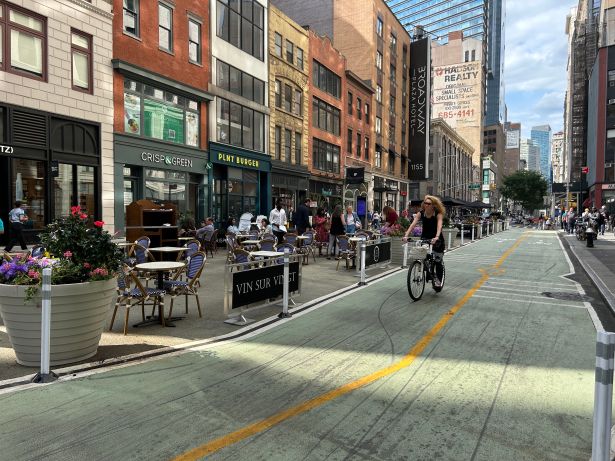
The Partnership also hosted the Summer Solstice Music Festival, which featured 14 live music acts playing throughout the district on June 20, and the organization’s Pershing Square Sounds program brings live music to the Pershing Square West plaza at lunchtime every Tuesday and after work on Wednesdays.
The Downtown Alliance, meanwhile, has continued its own annual tradition of hosting the Dine Around Downtown Community Food Festival at Fosun Plaza, which last month offered tastings from over 40 local restaurants in an event hosted by celebrity chef Rocco DiSpirito.
It has also continued its “LM Live” series, a programming initiative designed to highlight the area’s talent, innovation, history, and culture. This includes new installments of the “New York on Film” series, held at Alamo Drafthouse, which features film screenings followed by conversations with the filmmakers and other prestigious speakers.
“We’ve done a screening of Brooklyn Bridge by Ken Burns with the New York Times’ Michael Kimmelman interviewing him, and a showing of Man On Wire with Philippe Petit, the man who crossed that wire between the original World Trade Center towers,” said Lappin. “We also did a screening of 12 Angry Men with one of Spike Lee’s set designers. That series has been hugely successful.”
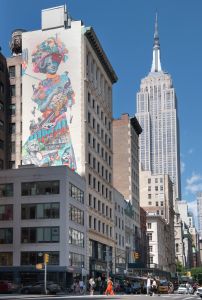
On the performance front, the Alliance’s Lunchtime Summer Concert Series will host free music and dance performances every Wednesday at Noon until July 17, alternating between 140 Broadway and the Oculus World Trade Center’s North Plaza.
The Alliance has also been spreading the word about the exciting opening last September of the Perelman Performing Arts Center, a multi-space venue that already has its first hit with “The Jellicle Ball,” a ballroom-inspired reimagining of Andrew Lloyd Webber’s Cats.
And continuing the theme of theatrical success, the creators of long-running sensation “Sleep No More” have also unveiled their new immersive show in the district.
“Life and Trust,” at the fantastically art deco Conwell Coffee Hall at 6 Hanover Street, purports to use its Financial District location to “pull back the curtain on American ambition.”
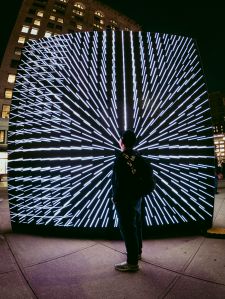
“They’re in previews there now and they’re set to open beginning of August,” said Lappin. “The fact that they would choose downtown for their next iteration is a sign of how they view this neighborhood in such a creative and positive way.”
The Alliance has also been delighted by the announcement that an outlet of the popular French department store chain Printemps will be opening at One Wall Street in the spring of 2025.
“This is a big deal,” said Lappin. “It’s a Parisian luxury department store founded in 1865. It’s fascinating to me that in all of North America, this is where such a legendary Parisian brand has chosen to plant a flag.”
The extravagant shopping destination will include five different restaurant concepts led by culinary director Gregory Gourdet, a Jean-Georges alumnus, Top Chef judge, and James Beard award winner.
“As we move into this new world of experiential retail, of course there will be things to buy, but there will also be places to sit and have a coffee, a champagne, or a meal, and to really enjoy lower Broadway,” said Lappin. “Printemps really is a huge coup for us.”
In addition to beautification and maximization of area resources, the BIDs also play a key role in helping their areas plan for the future.
Metthem notes that in Flatiron NoMad, hotel and restaurant development in particular, and retail in general, have been quite strong of late.
“Entertainment and recreation sales are up over 100 percent since 2019,” said Metthem. “Hospitality bookings and hotels are showing an over 50% increase compared to before the pandemic, and retail and restaurants are showing sales equal to 2019.”
Looking ahead, then, his Partnership is working with the city on the Midtown South Mixed-Use Plan, which seeks ways to “future-proof” the area by making it more conducive to all of the 24/7 aspects of life in New York City.
“We’re looking at one of the last remaining manufacturing sections of the city, here in NoMad from 23rd Street up to 32nd Street, and thinking about ways to rezone that for more mixed-use and housing,” said Mettham. “We’re thinking not just about future development, but also about how rezoning can improve sidewalks and other public spaces.”



